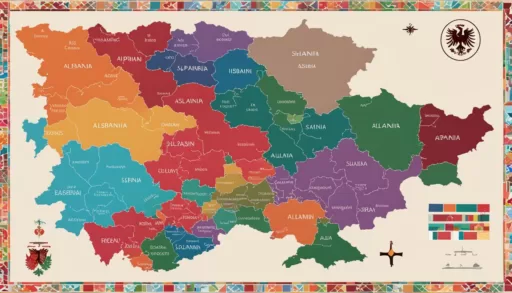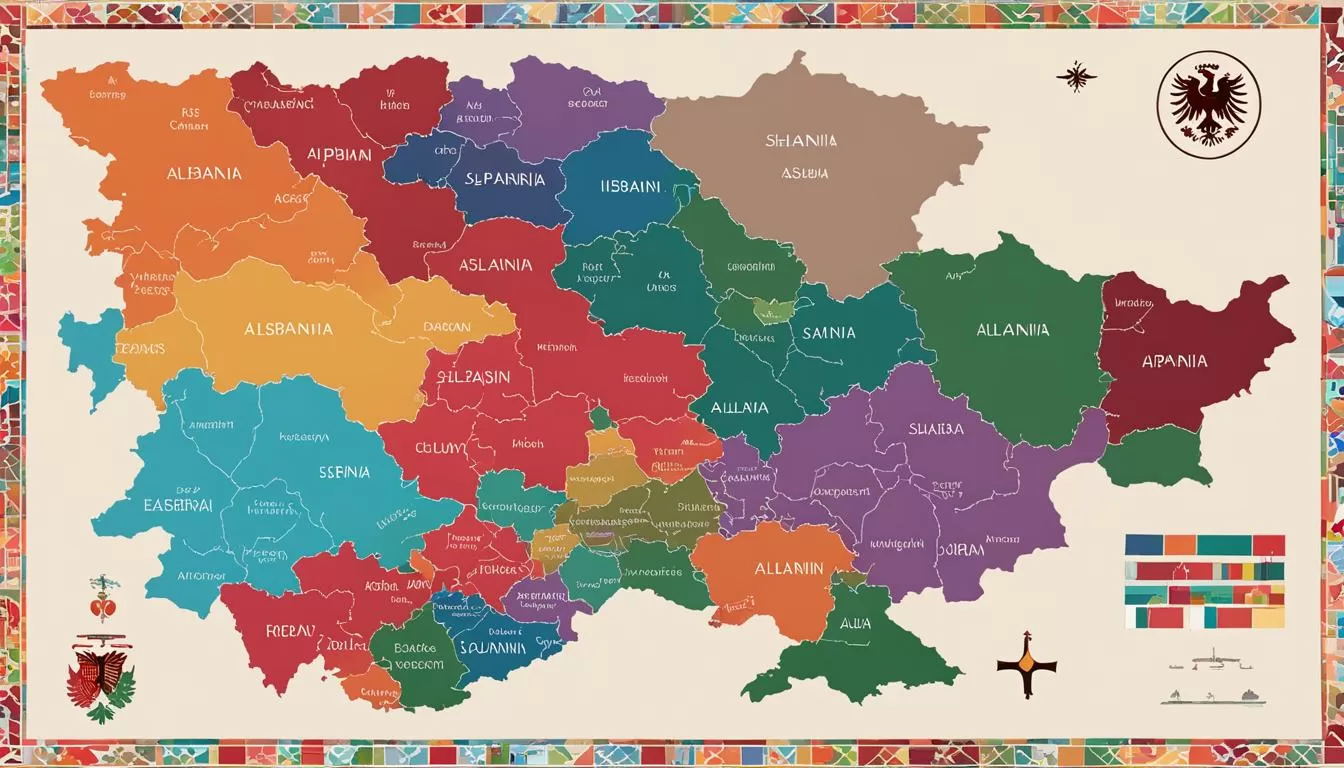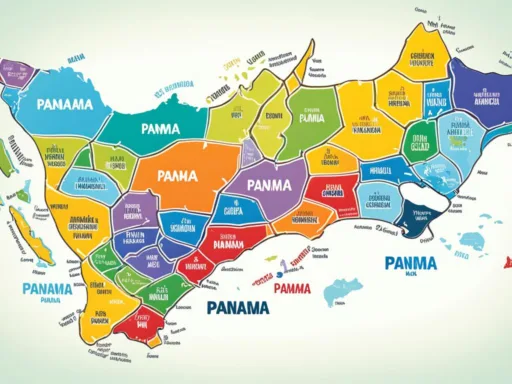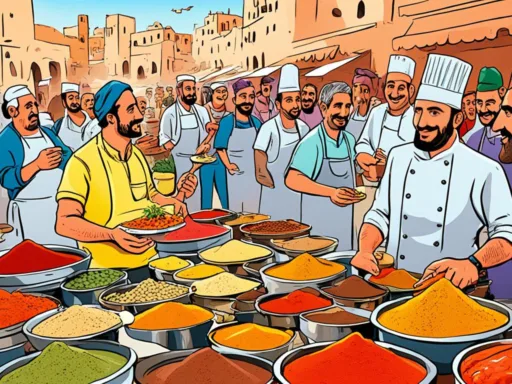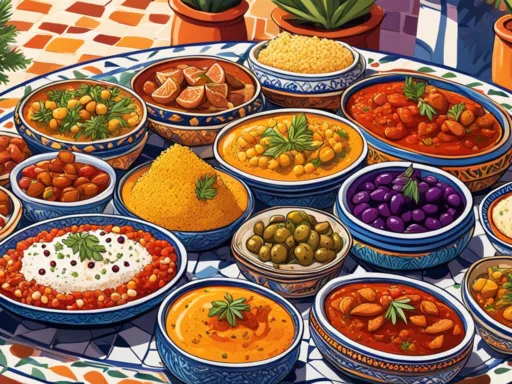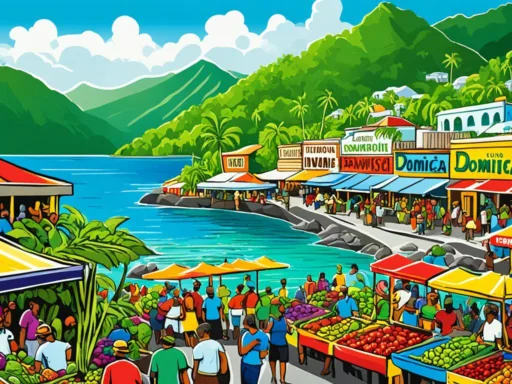Nestled in the Balkan Peninsula, Albania presents a unique linguistic landscape, echoing its history and cultural depth. The predominant languages spoken in Albania create a vibrant tapestry of communication, with the Albanian language taking center stage as the country’s official tongue. Yet the story of linguistic diversity in Albania doesn’t end here; it stretches to embrace a variety of dialects and foreign idioms, painting a picture of a nation rich in linguistic plurality.
The Albanian language is a pillar of national identity, carrying the heritage and expression of the Albanian people. However, the language’s influence is augmented by its many dialects and the incorporation of minority and foreign languages, which add layers to Albania’s cultural dialogue. In every corner of the country, from the bustling cities to the serene rural landscapes, the sounds of various tongues resonate, each contributing to the linguistic diversity that defines Albania today.
Key Takeaways
- The Albanian language is the cornerstone of Albania’s linguistic identity.
- Albania’s society is distinguished by considerable linguistic diversity.
- Multiple languages spoken in Albania reflect the country’s ethnic homogeneity and international connections.
- Dialectical variations contribute to the rich linguistic fabric within Albania.
- Language education and policies in Albania aim to preserve and foster multilingualism among its citizens.
The Rich Linguistic Tapestry of Albania
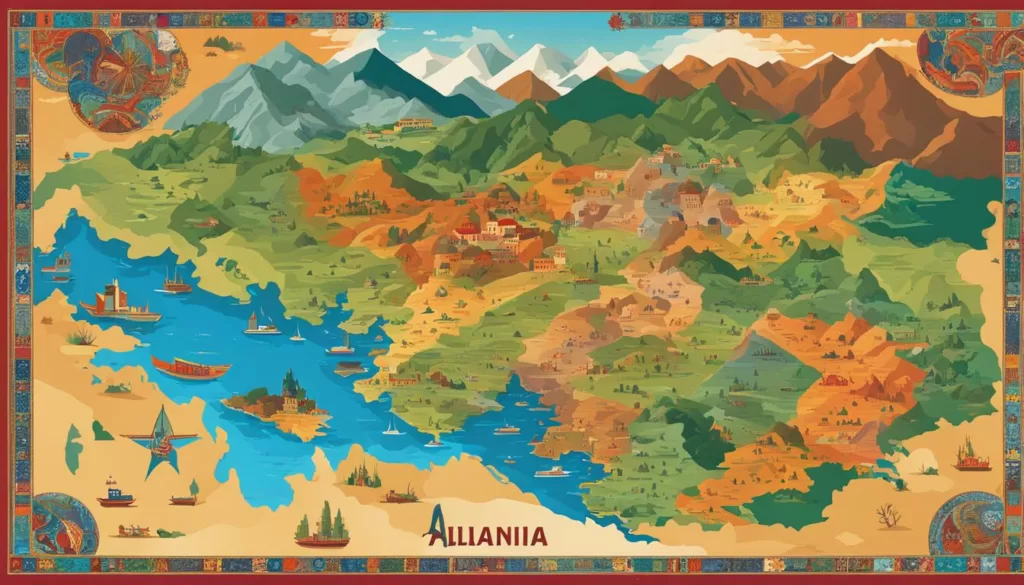
Albania’s storied past and dynamic present are reflected vividly in its language—a rich amalgam of native dialects and linguistic influences. At the heart of this linguistic diversity are the Albanian dialects, primarily Gheg and Tosk, which not only map the country’s regional linguistic landscapes but also carry narrative threads from ancient history into modern communication.
The Albanian Language and its Dialects
As the linguistic cornerstone of Albania, the Albanian language showcases two principal dialects: Gheg, predominant in the north, and Tosk, prevalent in the south. The Shkumbin River carves the geographic distinction between them, endowing each with distinctive phonological elements while maintaining mutual intelligibility. Let’s delve a bit deeper into these dialects:
- Gheg: Spoken by the populace residing above the Shkumbin, this dialect boasts distinctive nasal sounds and maintains a tradition of oral storytelling.
- Tosk: Below the Shkumbin, Tosk becomes the vocal expression of choice, varied slightly in its intonation and rhythm from its northern counterpart but unified in its written form as the basis for standard Albanian.
The interplay between Gheg and Tosk not only crafts the rich, dual panorama of Albanian expression but also preserves the splendid heritage inherent within Albania’s dialectology.
Bilingualism and Multilingualism Trends
Albanian’s reach extends well beyond its native speakers. In the velvety folds of its mountains and the cobblestone enclaves of its cities, the threads of multilingualism weave a pattern of global connectivity. Thanks to extensive diasporic ties, and the propensity of the youth to embrace global languages, bilingualism in Albania is flourishing—with English, Italian, and Greek leading the way.
- Bilingualism: Many Albanians bridge cultures by speaking both their native tongue and a second, often international, language, creating a nimble, bilingual populace.
- Multilingualism: Among the younger demographics, the drive to master multiple foreign languages is palpable, positioning Albania as a hub of linguistic adaptability within the Balkans and the broader European arena.
This ever-evolving tableau of language in Albania paints the country not just as a repository of history, but as a dynamic participant in the global narrative of cultural and linguistic exchange.
Languages Spoken in Albania: Official and Minority Languages
At the crossroads of civilizations, Albania’s linguistic landscape is as diverse as its history. While the official language Albania recognizes is the rich Albanian tongue, a tapestry of minority languages Albania and ethnic languages Albania echo through its valleys and urban centers. This intricate web of languages not only showcases the country’s multicultural heritage but also mirrors the societal fabric that makes up modern-day Albania.
Albanian: The Official Tongue
Albanian, with its deep Illyrian roots, stands as the official language of the nation, unifying its people with a sense of shared identity and pride. The constitutionally safeguarded linguistic treasure is not only a means of communication but also a vessel of cultural and historical narratives for the Albanian populace.
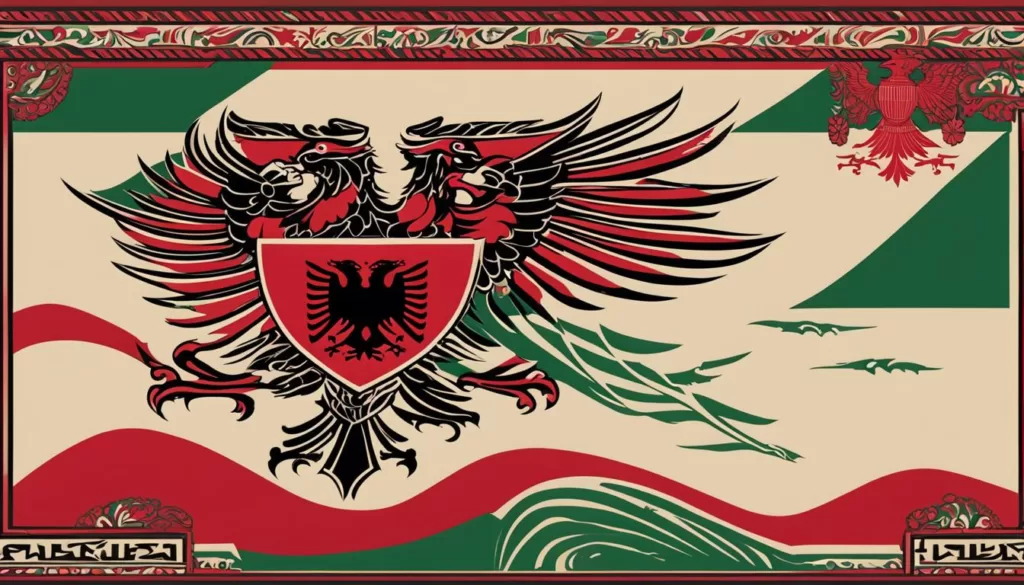
Greek, Macedonian, and Other Minority Languages
In the mosaic that is Albania’s demographic, the colorful pieces representing various ethnic minority groups contribute to the nation’s multilingual chorus. Notably, the Greek language, carrying the historical weight and influence from immigration patterns, serves as the primary minority idiom. Inhabitants of areas like Himara and Saranda are often bilingual, toggling between fluent Albanian and Greek with ease. Macedonian echoes in the southeastern stretches, particularly in the Pustec locality – a testament to the shared histories and geographical proximity with North Macedonia. Beyond these, other minority languages such as Aromanian, Romani, and Serbo-Croatian dot the linguistic map of Albania, each adding its unique hue to the country’s cultural canvas.
| Language | Region | Percentage of Speakers | Status |
|---|---|---|---|
| Albanian | Nationwide | 98.76% | Official Language |
| Greek | Himara, Saranda, and other parts of southern Albania | Not officially documented | Recognized Minority Language |
| Macedonian | Pustec Municipality | Approx. 0.2% | Recognized Minority Language |
| Aromanian | Central and Southern Regions | Estimated up to 200,000 individuals | Recognized Cultural Minority |
| Romani | Various Localities | Estimated 10,000 individuals | Unofficially Recognized Language |
| Serbo-Croatian | Border zones in Northern Albania | Not officially documented | Language of Communication |
Albanian: A Language of Many Influences
The evolution of the Albanian language is a testament to the rich cultural crossroads that is Albania. Over centuries, this Balkan nation has been a confluence for variegated empires, and the historical influence language impact is indelibly etched into the very core of the country’s lexicon. It is this storied past that has crafted the Albanian vocabulary into an exquisite mosaic, reflecting varied linguistic heritages and the essence of linguistic diversity Albania has to offer.
Latin, Slavic, and Turkish Contributions to Albanian Vocabulary
The Albanian lexicon bears the indelible mark of Latin’s influence, with a trove of its verbiage rooted in ancient Rome’s tongue. Likewise, the imprint of Slavic contributions can be discerned through the language’s syntax and semantics. The Turkish lexicon, inserted during centuries of Ottoman sovereignty, has seamlessly integrated into the everyday speech of Albanians, resulting in a blended vocabulary rich in historic resonance and utilitarian flexibility, a true celebration of the linguistic diversity Albania represents.
The Impact of Historical Powers on Linguistic Evolution
In tracing the linework of Albania’s linguistic tapestry, one may witness the vivid patterns drawn by historical powers. A significant Arabic component colors the Albanian vocabulary, a legacy of long-standing connections with the Eastern world, particularly through Ottoman ties. This exchange is most evident in the multitude of borrowed Arabic, Turkish, and Persian words, which stand as linguistic signposts to Albania’s storied connections with powerful empires of yore.
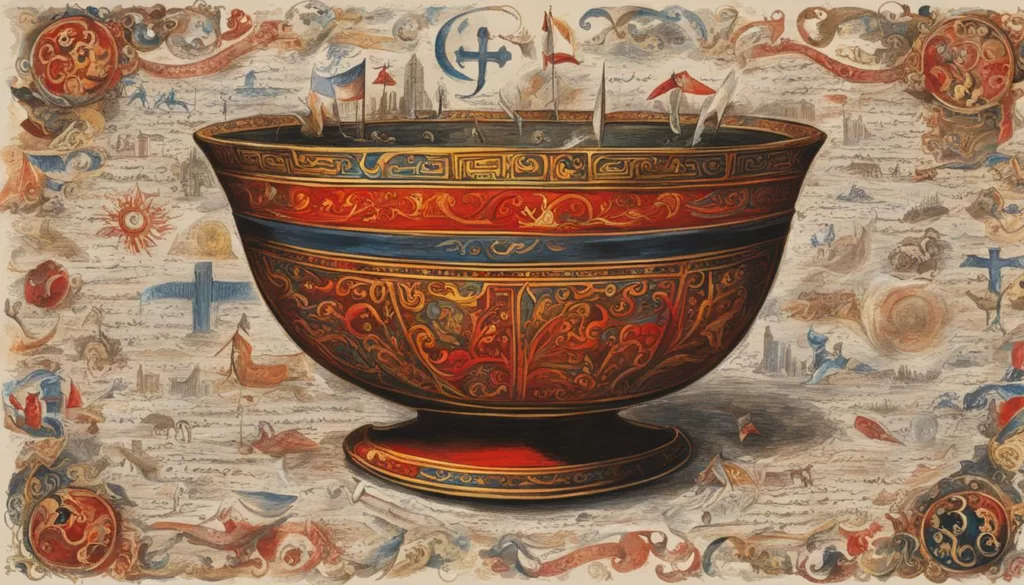
Understanding the depth and breadth of these historical threads helps to appreciate the complexity and adaptability of the Albanian language as it continues to evolve. Just as the people of Albania are woven of diverse threads of heritage, so too is their language—a culmination of influences and an ongoing narrative of resilience and richness.
The Geographic Linguistic Divide: Gheg and Tosk Dialects
Albania’s linguistic tapestry is richly woven with diverse threads, among which the Gheg dialect and Tosk dialect form intricate patterns that vividly illustrate the country’s geographic and cultural divisions. The Shkumbin River, a natural demarcation line, segregates these Albanian dialects not only geographically but also linguistically, offering a fascinating glimpse into the regional specificity of language and its uses.

In the northern expanse, the Gheg dialect resonates through the spoken word with a melody distinct from its southern counterpart. It’s an oral tradition strong in storytelling and local vernacular, a dialect that has persisted through the ages without an official orthography, yet alive in the daily discourse of the Gheg-speaking populace. Despite the lack of a standardized written form, the Gheg dialect is integral to the cultural identity of northern Albania.
Below the Shkumbin, the Tosk dialect holds sway, its pronunciation and lexicon laying the foundation for the standardized Albanian language taught in schools and used in official documents. This influence of the Tosk dialect on what is known as Standard Albanian attests to its central role in the linguistic infrastructure of the nation. With a literary tradition enriched over time, Tosk serves not only as a means of communication within the southern regions but also as the lingua franca across the entire country.
It is the coexistence and mutual intelligibility of these dialects that exemplify the unity in diversity present in Albania’s linguistic panorama. Here’s a brief overview highlighting the unique characteristics of these Albanian dialects:
| Dialect | Geographic Region | Characteristics | Role in Standard Albanian |
|---|---|---|---|
| Gheg | Northern Albania | Verbal tradition, nasal sounds, no official written form | Rich contributor to oral literature and cultural expression |
| Tosk | Southern Albania | Standardized orthography, basis for written and taught language | The groundwork for standardized Albanian language |
The continued vitality of Gheg dialect and Tosk dialect, along with other Albanian dialects, is a testament to the living history of Albania. As witnesses to the evolution of culture and language, they not only serve as pillars of identity for their speakers but also as bridging elements that connect the diverse regions of Albania, ensuring the dialects’ endurance for generations to come.
Foreign Languages within Albania’s Borders
The linguistic embrace of foreign languages Albania is indicative of the country’s rich tapestry of cultures and influences. With a youth whose eyes are set on global horizons and a history interlinked with various foreign powers, languages like English and Italian are not just learned in classrooms—they are part of the nation’s socio-cultural genome.
Given the close historical ties between Italy and Albania, the Italian language Albania enjoys a unique position in the nation’s linguistic repertoire. Its popularity is bolstered by Mediterranean connections, historical alliances, and the influence of Italian media, making it a familiar sound in Albanian homes and streets. This phenomenon has been further intensified by the economic and social interactions that have flowed between the two countries over the years.
English language Albania, on the other hand, has been burgeoning primarily amongst the younger generation—a testament to Albania’s forward-thinking education policies and increasing international engagement. From professional opportunity to the world of modern entertainment, English serves as a bridge to the global community and a springboard for the aspirations of Albania’s youth.
Other European languages such as French and German have also found their niche within Albania, inspired by educational exchanges and cultural programs. Additionally, the Chinese language is weaving its pattern into the Albanian linguistic fabric, reflecting the growing economic partnerships and educational opportunities being established with China.
As diverse as the landscape, from the beautiful coastlines to the rugged mountains, the languages spoken within Albania’s borders provide a journey through history, contemporary needs, and future aspirations. The following table illustrates the prevalence of these foreign languages, showcasing how they are intertwined with the fabric of Albanian society.
| Foreign Language | Scope of Influence | Primary Learning Methods | Common Uses |
|---|---|---|---|
| Italian | Broadest Reach | Media Consumption, Formal Education, Social Interaction | Cultural Affinity, Tourism, Trade |
| English | Significant Among Youth | Modern Education System, Online Platforms | International Communication, Entertainment |
| French | Niche Academic Circles | Cultural Programs, Educational Exchanges | Diplomacy, Arts, Literature |
| German | Growing Popularity | Language Courses, University Partnerships | Business Ventures, Scholarships |
| Chinese | Emerging Interest | Educational Scholarship Programs | International Trade, Educational Pursuits |
The linguistic abilities of the Albanian population, particularly in mastering foreign languages Albania, not only enables them to communicate across borders but also opens doors to diverse cultural experiences and economic opportunities. As Albania continues to interact with the global stage, the multi-lingual competence of its people is sure to play a key role in shaping its trajectory.
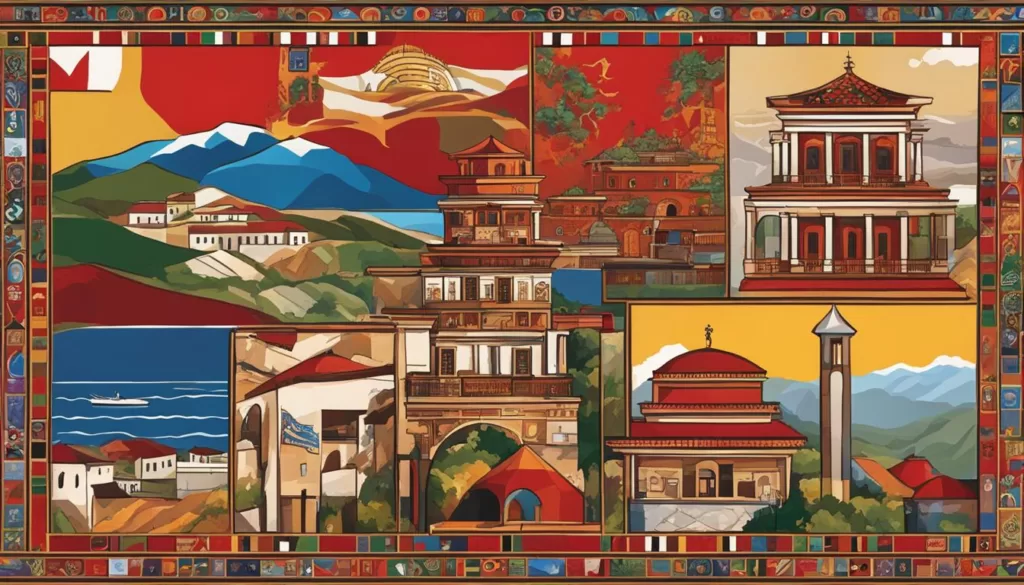
Albanian Language Education and Literacy
The promotion of Albanian language education stands as a key pillar in maintaining the country’s linguistic heritage. Through dedicated curricula and support for language preservation, Albania nurtures its rich cultural tapestry and ensures the proficiency and longevity of its native tongue. Moreover, this education system opens the doors to language resources that assist in learning and literacy, a cornerstone for any sovereign nation, but particularly so for one as linguistically textured as Albania.
The Role of Education in Language Preservation
Albania acknowledges the significance of language in the fabric of its identity, enacting education policies that reinforce the importance of maintaining the Albanian tongue. This conscious effort leads to a nation where language preservation Albania is not just a policy, it is a movement that is embraced by its educators and learners alike. Albanian language education offers vital sustenance to this movement, seeking to perpetuate linguistic knowledge and skills across generations. It’s through this dedication that the country can champion a dialogue rich in tradition yet ripe for future cultural and intellectual exchanges.
Albanian Language Resources for Learners
In line with advancing language resources Albania, a vast array of educational tools are accessible to bolster the language capabilities of its citizens. From comprehensive dictionaries to online courses, learners of Albanian can immerse themselves in an educational journey tailored to enhance their abilities both within domestic bounds and in the international arena. These resources serve not only learners within Albania but also a global audience keen on exploring the linguistic nuances of this Balkan nation.
- Dictionaries offering extensive coverage of Albanian lexicon
- Language aids designed to simplify grammar and usage
- Educational programs promoting bilingualism and multilingualism
- Online platforms connecting learners to native Albanian speakers
The emphasis on offering quality Albanian language education and resources benefits not only local students but also those in diverse linguistic landscapes who show interest in the language. Through these concerted efforts, Albania’s commitment to both preserving its own language and engaging with the global tapestry of tongues is clear and unwavering.
Legal Framework and Policies Impacting Languages in Albania
Albania’s linguistic landscape is governed by a comprehensive legal framework language Albania has established to uphold the status of its mother tongue while recognizing the rights of those speaking minority languages. This framework is pivotal for ensuring that the nation’s cultural and linguistic diversity is preserved and integrated into societal norms.
The Constitution and Language Rights
In the fabric of Albanian law, the constitution enshrines the Albanian language as the principal means of communication and governance. With unequivocal clarity, Article 14 mandates the preeminence of Albanian across the public sphere, offering a sanctuary for language rights. As such, it provides the foundation upon which the linguistic identity of Albania is protected and promoted. Within this inclusive framework, the rights of minorities to maintain and cultivate their linguistic heritage receive governmental support and acknowledgment, respecting the unique tapestry of tongues coexisting within the country’s borders.
Language Policy in the Context of European Integration
Parallel to its constitutional mandates, Albania’s vision for becoming a part of the European family catalyzes the evolution of its language policies. With European integration language policies serving as a driving force, Albania seeks to harmonize its language laws with European standards. This adaptative stance underpins the broader goal of fostering mutual understanding and cultural diplomacy, acknowledging that embracing linguistic plurality can serve as a conduit for international dialogue and cooperation. Through such policies, Albania not only advances its European aspirations but also fortifies its commitment to a multilingual and culturally rich society.
Conclusion: Embracing Unity Through Linguistic Diversity
The languages spoken in Albania encapsulate a symphony of cultural narratives, each note representing the country’s profound heritage and multilingual character. With Albanian as the official language, this diverse linguistic landscape serves not merely as a means for dialogue, but as a bridge between past and present traditions. Linguistic diversity in Albania showcases the harmonious coexistence of several dialects, minority languages, and foreign influences, painting a vibrant panorama that underscores Albania’s deep-seated value for inclusivity and cultural exchange.
As a testament to its societal commitment, Albania has championed robust educational systems and legal frameworks to ensure that the jewels of its multilingualism are not only preserved but eagerly shared with future generations. It is within this rich tapestry that the threads of various languages and dialects are woven into the social fabric, echoing the continual dance of cultural heritage in Albania. These concerted efforts to nurture the language landscape are pivotal in fortifying the nation’s identity and opening doors to global citizenship.
Indeed, the narrative of languages spoken in Albania is a dynamic chronicle of evolution, adaptation, and cultural enrichment. From the cobblestone streets of historical towns to the modern classrooms aspiring towards international collaboration, the spirit of Albania speaks in many tongues, yet with a single, unifying voice. As we acknowledge and celebrate this linguistic wealth, we come to understand the deep-seated connectivity and resilience that language imparts on the human experience, particularly within the kaleidoscope that is Albania.
FAQ
What are the primary languages spoken in Albania?
The official language of Albania is Albanian. It is the language used by the majority of the population. In addition to the standard Albanian, a variety of minority languages like Greek, Macedonian, Aromanian, Romani, and Serbo-Croatian are spoken by ethnic communities. The linguistic diversity in Albania also includes widespread use of foreign languages such as English and Italian, particularly among younger generations.
What dialects of Albanian are there?
The Albanian language branches into two main dialects: Gheg, which is predominantly spoken in the north of Albania, and Tosk, spoken in the southern part of the country. These dialects have unique phonological traits and are distinguished by the Shkumbin River, serving as a geographic dividing line.
Is bilingualism common in Albania?
Yes, bilingualism and multilingualism are increasingly prevalent among Albanians, especially the youth. Many people are fluent in Albanian and one or more foreign languages, with English, Italian, and Greek being the most commonly spoken secondary languages.
What are the most spoken minority languages in Albania?
The most spoken minority language in Albania is Greek, which is predominant in areas with ethnic Greek communities. Other notable minority languages include Macedonian—especially in the Pustec Municipality—and languages like Aromanian, Romani, and Serbo-Croatian, which are spoken by various ethnic groups within the country.
How has Albania’s history influenced the Albanian language?
Albania’s history as a crossroads of different civilizations has introduced a rich variety of influences to its language. The Albanian vocabulary contains elements from Latin, Slavic, and Turkish traditions, with many loanwords coming from these languages, due to the cultural and political interactions over centuries.
Are there any educational programs aimed at preserving the Albanian language?
Language education in Albania is robust, with a strong focus on preserving the Albanian language while also encouraging multilingualism. There are numerous educational programs and resources dedicated to ensuring that the Albanian language flourishes and that citizens can learn other foreign languages as part of their formal education.
What role does Albania’s constitution play in language policies?
The constitution of Albania establishes Albanian as the official language of the nation and provides the legal framework for protecting the language rights of minorities. These provisions ensure the preservation of Albania’s linguistic heritage while also accommodating the multicultural aspects of its society.
How are foreign languages perceived in Albania?
Foreign languages are highly valued in Albania, with many Albanians recognizing the importance of learning languages such as English, Italian, and Greek for both personal and professional development. These languages are also seen as vital for Albania’s international engagement and for fostering cultural exchange.
